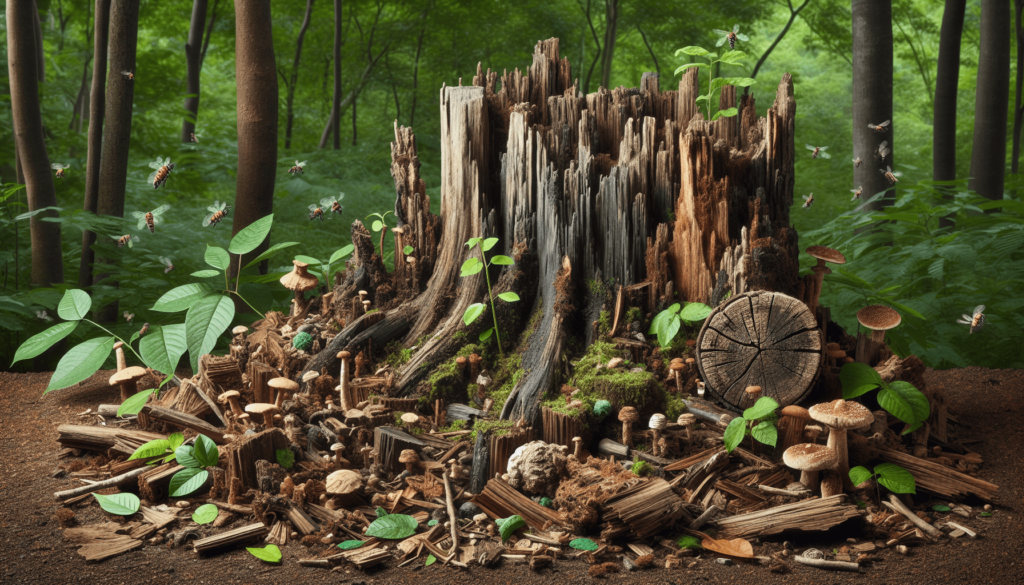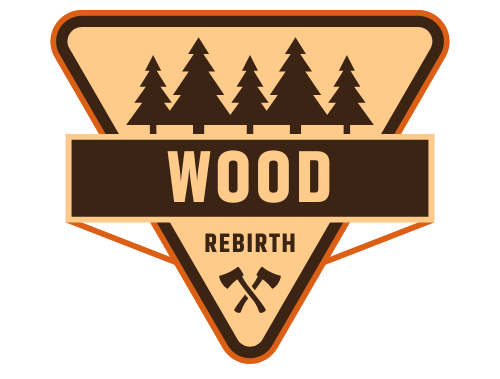Imagine walking through a lush forest, surrounded by towering trees and the sweet scent of nature. As you observe the trees, you may wonder about the different types of wood they produce and the potential waste that comes from them. In this article, we will explore the various types of wood waste and provide you with a deeper understanding of their characteristics and uses. So, join us as we embark on a journey to uncover the fascinating world of wood waste.
Solid Wood Waste
Solid wood waste refers to the discarded wood materials that are generated during various processes in the timber industry. This type of waste typically includes unused timber planks, wood offcuts, and scraps from furniture manufacturing, construction sites, and other woodworking activities. Solid wood waste accounts for a significant portion of the overall waste generated in the wood industry, and it presents both challenges and opportunities for waste management and recycling efforts.
Manufacturing Waste
Manufacturing waste in the wood industry primarily includes leftover materials from the production of wooden products such as furniture, cabinets, and flooring. These waste materials can be in the form of irregular-shaped wood pieces or sawdust and shavings. While it may seem like waste, these materials can still be repurposed or recycled to minimize their environmental impact.
One approach to managing manufacturing waste is to reuse the wood offcuts and scraps in other production processes. For example, smaller wood pieces can be utilized as decorative accents or components for smaller products. Additionally, sawdust and shavings can be collected and used for animal bedding, compost, or as a fuel source in biomass power plants.
Construction Waste
Construction waste refers to the byproducts of building projects that involve wood materials. This waste category includes materials such as discarded timber, wooden pallets, and packaging materials. Construction waste can account for a significant volume of wood waste due to the large-scale nature of construction projects.
Efforts to minimize construction waste involve proper planning and efficient use of wood materials during the construction process. This can include optimizing the cutting and assembly of wooden components to minimize waste generation. Additionally, implementing recycling programs on construction sites can facilitate the sorting and recovery of wood waste for recycling or repurposing.
Furniture Waste
Furniture waste consists of discarded or unwanted wooden furniture items. This waste category includes items such as chairs, tables, cabinets, and bed frames. As furniture styles change, older or damaged furniture may be discarded, contributing to the accumulation of wood waste.
To reduce furniture waste, it is crucial to promote the concept of “extended producer responsibility.” Furniture manufacturers can take responsibility for their products’ entire lifecycle, including facilitating recycling and proper disposal when the furniture reaches the end of its usable life. Additionally, encouraging the repair and refurbishment of furniture can prolong its lifespan and minimize the need for disposal.
Engineered Wood Waste
Engineered wood waste refers to the byproducts generated during the production and use of engineered wood products. Engineered wood is a composite material made from various wood-based components, offering enhanced strength and stability compared to solid wood.
Plywood Waste
Plywood waste mainly consists of unused or damaged plywood sheets. Plywood is widely used in construction, furniture manufacturing, and various other applications. When plywood sheets become damaged or are no longer needed, they contribute to the waste stream.
To manage plywood waste, recycling programs can be implemented to collect and process discarded plywood sheets. The recycled plywood can then be used in the production of new wood products or as a raw material for biomass energy generation.
Particleboard Waste
Particleboard waste refers to the byproducts generated during the manufacturing and disposal of particleboard. Particleboard is made by compressing wood particles and resin under heat and pressure. It is commonly used as a low-cost alternative to solid wood in furniture and cabinets.
To tackle particleboard waste, recycling initiatives can focus on collecting and processing discarded particleboard panels. The recycled particleboard can be utilized in the production of new boards or transformed into other wood-based products.
Medium Density Fiberboard (MDF) Waste
MDF waste comprises the unused or discarded medium density fiberboard (MDF) panels. MDF is produced by breaking down wood fibers, combining them with resin, and forming panels under high pressure. It is commonly used in furniture manufacturing, cabinetry, and interior finishes.
To effectively manage MDF waste, recycling programs can be established to collect and process the unused or damaged MDF panels. The recycled MDF can then be used to produce new panels or transformed into other wood-based products.

Wood Pulp Waste
Wood pulp waste refers to the waste generated during the production of paper and packaging materials. Wood pulp is the raw material used in the papermaking process and plays a vital role in the production of various paper-based products.
Paper Waste
Paper waste encompasses discarded paper products such as newspapers, magazines, cardboard, and other paper-based materials. This waste category can also include paper that is damaged or no longer needed in offices and other commercial settings.
To manage paper waste, recycling programs have become commonplace, allowing paper products to be collected, processed, and transformed into recycled paper. This minimizes the demand for new wood pulp and reduces the environmental impact associated with paper production.
Packaging Waste
Packaging waste consists of the discarded packaging materials used for various products, including food, electronics, and consumer goods. Wood-based packaging materials such as wooden crates, pallets, and packaging inserts contribute to this waste category.
Efforts to reduce packaging waste involve promoting sustainable packaging practices, such as using recyclable or biodegradable materials. Furthermore, recycling programs can be established to collect and process wood-based packaging waste, ensuring that it is repurposed or recycled rather than ending up in landfills.
Wood Biomass Waste
Wood biomass waste refers to the organic waste materials derived from the forestry and agricultural sectors. It includes logging residues and agricultural waste, both of which offer opportunities for energy generation and other beneficial applications.
Logging Residues
Logging residues refer to the branches, tops, and other woody debris left behind after timber harvesting operations. Typically, these residues would be left on-site or burned, contributing to air pollution and wasteful practices.
To manage logging residues effectively, they can be collected and utilized as a feedstock for biomass energy generation. Additionally, they can be processed and transformed into wood chips, mulch, or other wood-based products, minimizing their waste potential and creating value from previously unused materials.
Agricultural Waste
Agricultural waste includes wood-based waste materials generated in the agricultural sector. This can include unused or damaged wooden packing crates, pallets, and farming equipment made from wood. The waste may also encompass residues from crop production and pruning waste from orchards and vineyards.
To minimize agricultural waste, recycling programs can be implemented to collect and process wood-based agricultural waste. The recycled wood materials can then be repurposed, used for energy generation, or transformed into other value-added products, reducing the need for new wood resources.

Wood Treatment Waste
Wood treatment waste refers to the waste materials generated during the treatment of wood products to enhance their durability and resistance to decay and pests. Different treatment methods involve various chemical processes to protect the wood.
Treated Wood Waste
Treated wood waste includes discarded wood products that have undergone treatment processes such as pressure impregnation with preservatives. This waste category can encompass utility poles, fence posts, railway sleepers, and other wood products that require enhanced durability.
To manage treated wood waste, recycling initiatives can focus on separating and collecting the waste for proper processing. The treated wood can then be transformed into wood chips, biofuel, or used as feedstock for thermal energy production, reducing the environmental impact associated with its disposal.
Creosote-treated Wood Waste
Creosote-treated wood waste specifically refers to wood products that have been treated with creosote. Creosote is a preservative containing chemicals that protect wood from decay and insect attack. Common applications of creosote-treated wood include railroad ties, outdoor structures, and marine pilings.
Given the potential environmental risks associated with creosote-treated wood, it is crucial to handle and dispose of this waste properly. Recycling efforts can focus on collecting and processing this waste for controlled disposal, ensuring that it does not contaminate the environment and that any reusable components are salvaged.
Copper-treated Wood Waste
Copper-treated wood waste refers to wood products treated with copper-based preservatives, such as copper azole or micronized copper. These treatments help protect the wood from rot, fungus, and termite infestation. Copper-treated wood is commonly used in decking, fencing, and other outdoor applications.
To manage copper-treated wood waste, collection programs can be established to ensure proper handling and disposal. Recycling initiatives should focus on separating the waste for processing, allowing the copper-treated wood to be repurposed or transformed into biomass fuel for energy generation.

Hi, I’m James Gheen, the creator behindWoodRebirth.com. As someone passionate about sustainability and environmental stewardship, I created this pioneering online platform to change how we approach wood waste and pallet disposal. Through detailed recycling and disposal guides, creative DIY projects, and upcycling inspirations, I aim to inspire individuals and businesses to adopt eco-friendly practices in their wood waste management. At WoodRebirth.com, we foster a vibrant community focused on education and engagement, encouraging the sharing of ideas and success stories. Join me in our mission to give wood waste a new lease on life, making a tangible impact on our environment, one pallet at a time.

